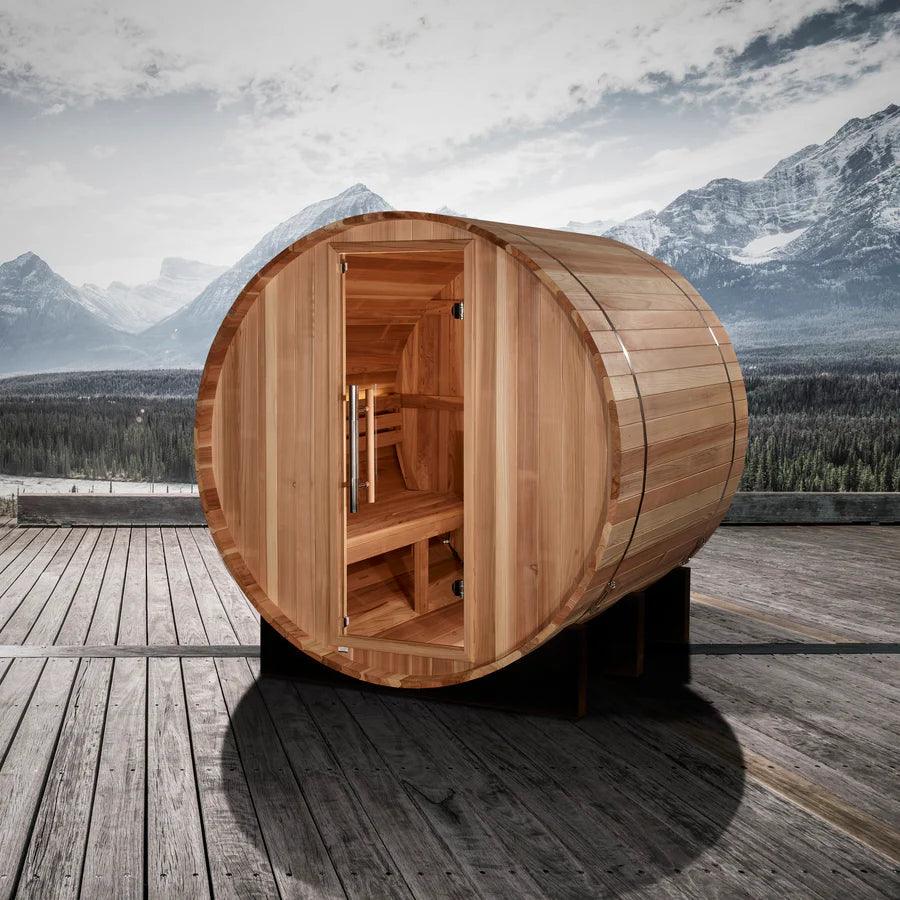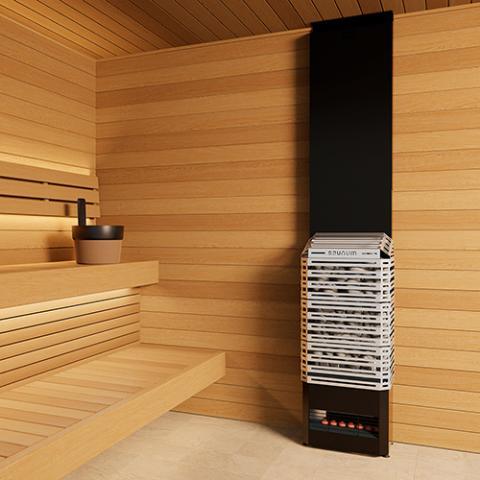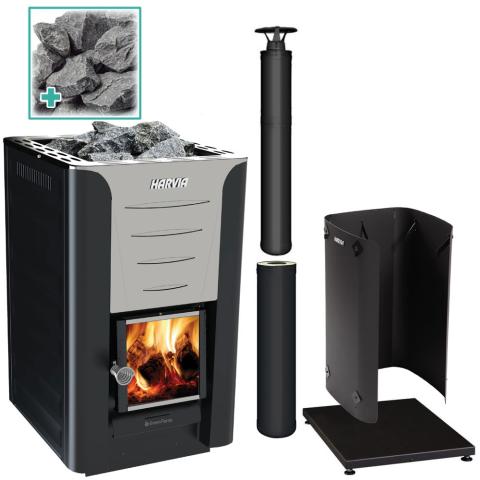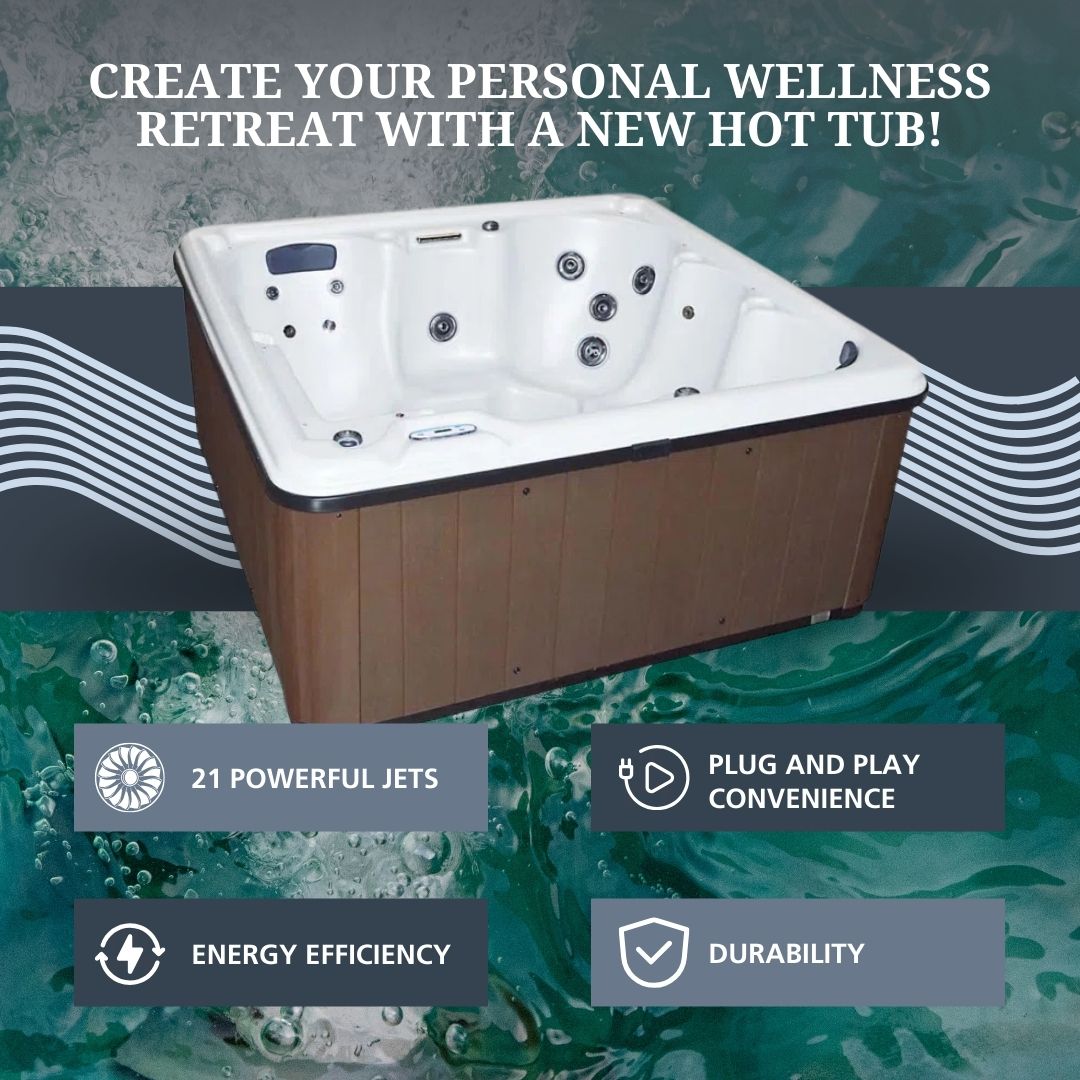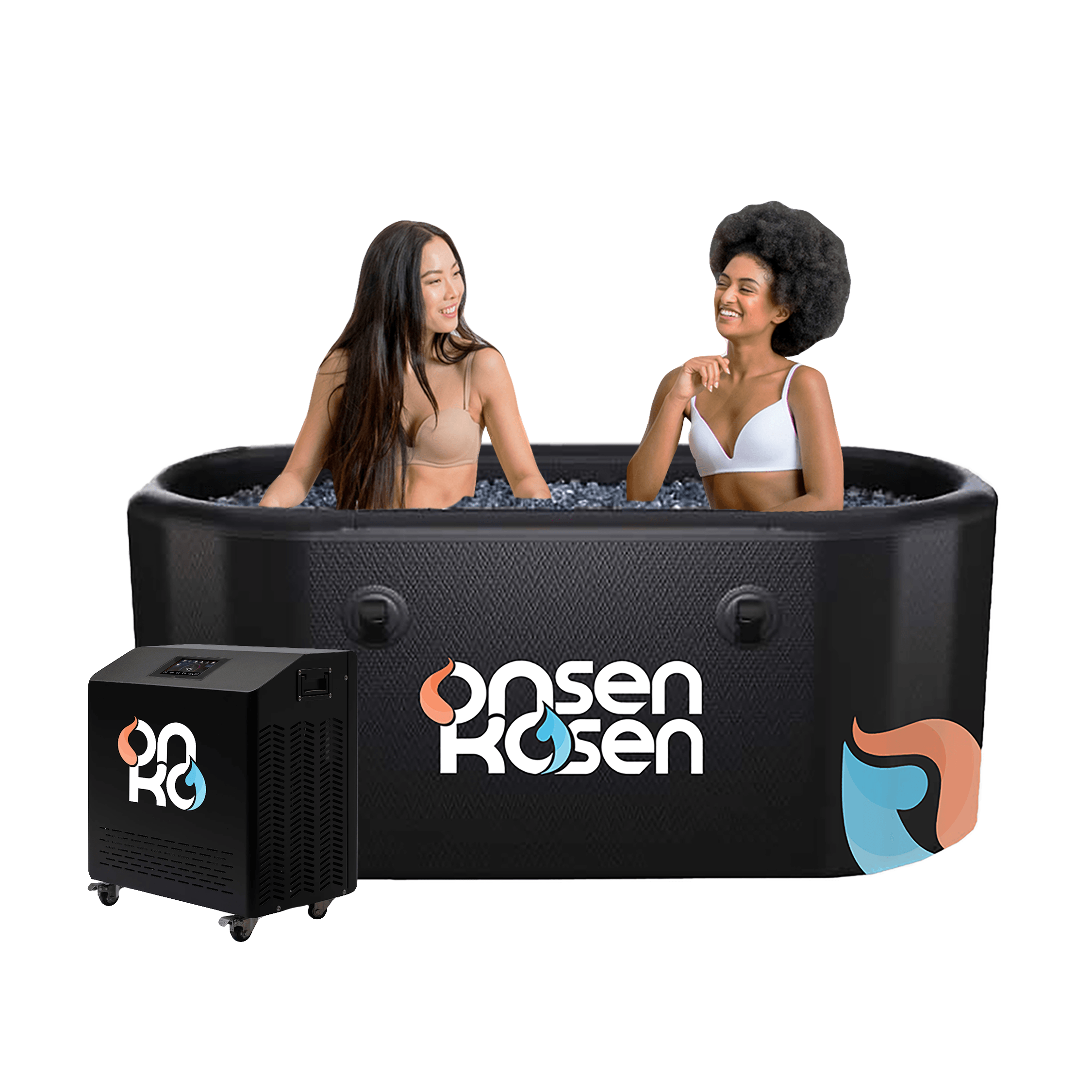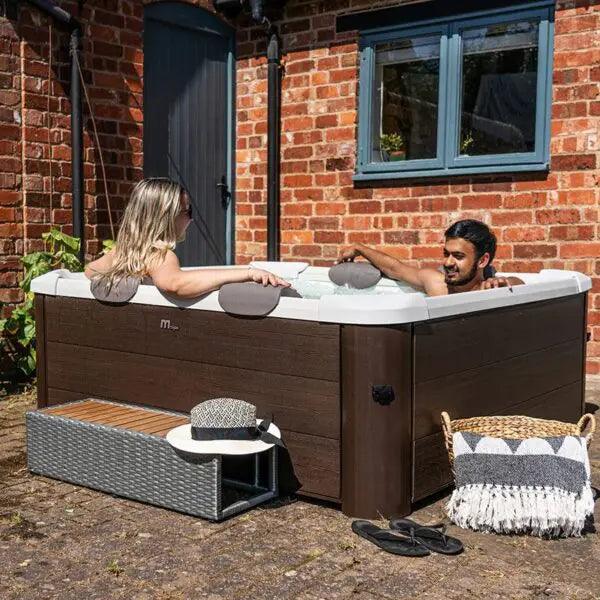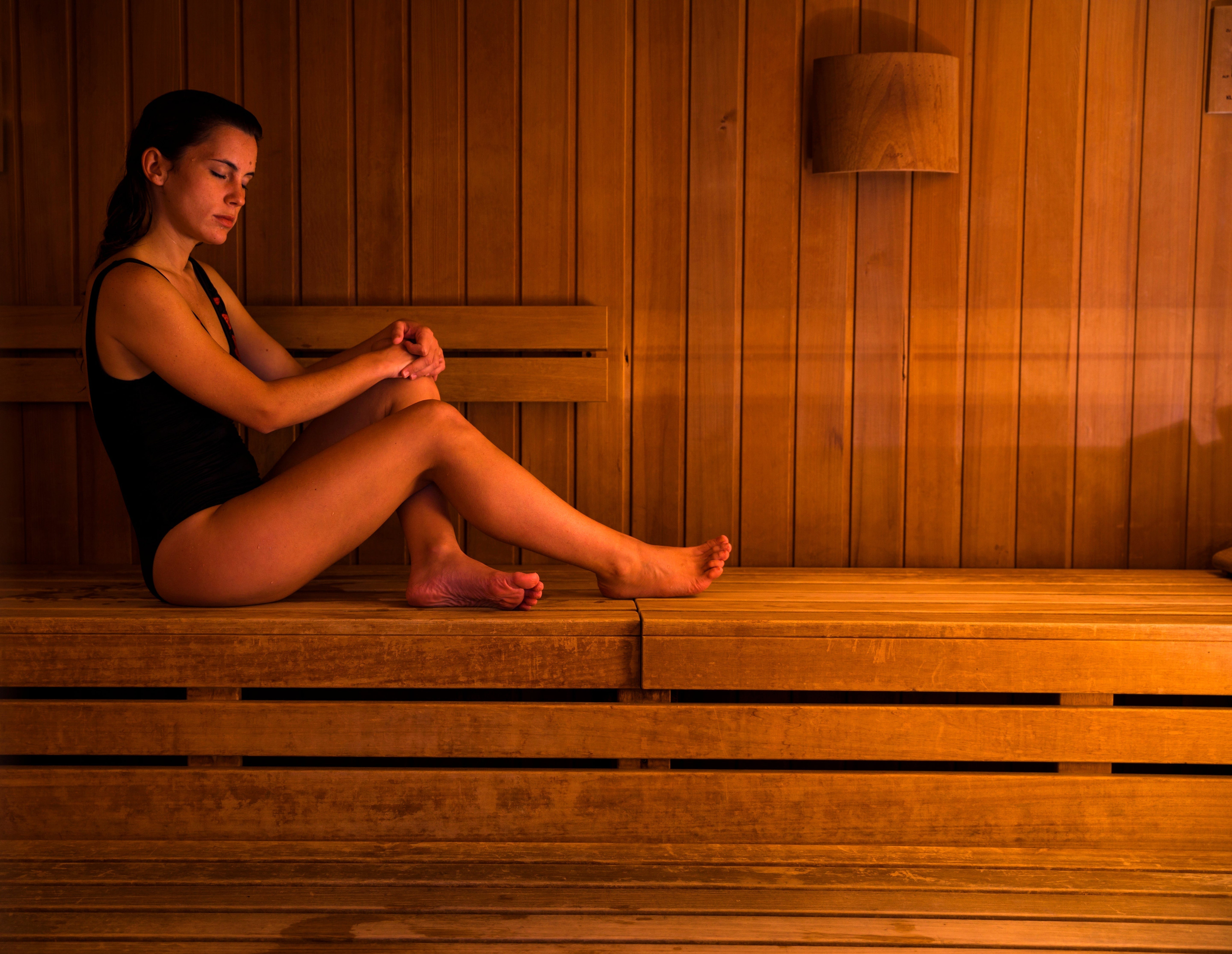Transform your backyard into a personal wellness sanctuary with an outdoor infrared sauna. These innovative wellness spaces combine cutting-edge heating technology with the tranquility of outdoor living, creating a perfect retreat steps away from your home.
An outdoor infrared sauna uses advanced heating elements that emit infrared waves, penetrating deep into your body tissues at lower temperatures than traditional steam saunas. This gentle heating approach has sparked a surge in popularity among homeowners seeking health benefits without the intense heat of conventional saunas.
You'll discover these wellness additions in backyards across America, from compact models perfect for intimate spaces to larger units designed for family use. The growing trend reflects a broader shift toward home-based wellness solutions that blend therapeutic benefits with outdoor living.
This guide walks you through essential considerations for selecting your perfect outdoor infrared sauna. You'll learn about size options, material choices, installation requirements, and key features to match your specific needs and space.
Understanding Outdoor Infrared Saunas
Infrared saunas use invisible light waves to create therapeutic heat that goes deep into your body tissues. Unlike traditional steam saunas that heat the air around you, infrared technology directly warms your body, allowing you to experience intense benefits at lower, more comfortable temperatures (120-140°F).
The infrared heating panels in these saunas can be strategically placed to target specific areas of your body, creating a customized therapeutic experience. You'll find different wavelength options available - near, mid, and far-infrared - each offering unique benefits for your wellness journey.
These modern saunas also require less power consumption than traditional models, making them an energy-efficient choice for your backyard wellness space. The controlled environment allows for year-round use, regardless of external weather conditions.
Types of Outdoor Infrared Saunas Available
The outdoor sauna market offers diverse options to match your specific wellness needs and preferences. Let's explore the distinctive characteristics of traditional Finnish saunas, a time-tested choice that continues to captivate sauna enthusiasts worldwide.
Traditional Saunas
Traditional saunas represent the authentic sauna experience, characterized by:
-
High Heat Environment: Temperatures ranging from 150°F to 185°F (65°C to 85°C)
-
Steam Generation: Water poured over heated rocks creates löyly - the signature steam burst
-
Wood Construction: Typically built using Nordic spruce or cedar
-
Ritual Experience: Traditional bathing customs and cultural practices
Benefits of Traditional Saunas:
-
Deep muscle relaxation through intense heat
-
Authentic steam-based cleansing
-
Cultural connection to centuries-old wellness practices
-
Robust social experience for groups
-
Proven durability in outdoor settings
Potential Drawbacks:
-
Higher energy consumption
-
Longer heat-up time (30-45 minutes)
-
Intense heat might not suit heat-sensitive users
-
Regular maintenance of rocks and heating elements
-
Higher installation costs
Traditional saunas require specific considerations for outdoor placement:
-
Foundation Requirements: Solid, level base with proper drainage
-
Ventilation System: Strategic air flow design
-
Weather Protection: Robust roofing and wall construction
-
Space Requirements: Larger footprint for changing area and wood storage
-
Electrical Setup: Professional installation for heater systems
These saunas create an authentic bathing experience through their distinctive heating method. The combination of high temperatures and steam creates a unique environment that differs significantly from modern infrared alternatives. Users seeking the classic sauna experience often gravitate toward these traditional models, particularly when planning permanent outdoor wellness spaces.
Infrared Saunas
Infrared saunas are an innovative twist on the classic sauna experience, thanks to cutting-edge heating technology. Unlike traditional saunas that heat the air around you, infrared saunas use light waves to directly warm your body.
How Infrared Saunas Work
These modern saunas operate at lower temperatures (120-140°F) compared to traditional saunas (170-190°F), creating a gentler, more comfortable experience. The infrared rays penetrate deep into your tissues, promoting:
-
Increased blood circulation
-
Enhanced muscle recovery
-
Deeper relaxation
-
Improved skin health
-
Effective detoxification
Benefits of Infrared Saunas
The gentle heat allows for longer sauna sessions, typically 30-45 minutes, compared to the 15-20 minutes recommended in traditional saunas. This extended exposure time maximizes the therapeutic benefits while reducing heat stress on your body.
SplashBlaze™'s infrared saunas feature precise temperature controls and energy-efficient operation. The heating elements distribute warmth evenly throughout the cabin, ensuring consistent comfort during your session. These units require less power consumption and warm up faster than traditional models, making them practical for regular home use.
Portable and Custom-Built Options
Portable infrared saunas offer unmatched flexibility for homeowners with space constraints or those who prefer versatility in their wellness setup. These compact units can be:
-
Assembled and disassembled within hours
-
Moved to different locations in your backyard
-
Stored during off-seasons
-
Transported for use at different properties
Custom-built options provide a personalized approach to your outdoor sauna experience. You can tailor every aspect to match your specific requirements:
Design Elements:
-
Architectural style matching your home
-
Window placement for optimal views
-
Door configurations
-
Interior layout and seating arrangements
-
Lighting systems
Size Variations:
-
Compact single-person units
-
Multi-person family spaces
-
Commercial-grade installations
The portable models typically feature lightweight materials and modular components, making them ideal for renters or homeowners who might relocate. Custom-built options integrate permanent features like specialized ventilation systems and dedicated electrical setups.
Determining Size, Capacity, and Location for Your Outdoor Infrared Sauna
Selecting the right size and location for your outdoor infrared sauna impacts both functionality and enjoyment. Your sauna's dimensions should align with your intended usage patterns and available space.
Sauna Capacity Options:
-
2-Person: 4' x 4' - Perfect for couples or small spaces
-
3-4 Person: 5' x 5' - Ideal for families
-
5-7 Person: 6' x 7' or larger - Suited for social gatherings or commercial use
Space Requirements:
-
Allow 2-3 feet of clearance around all sides
-
Consider height restrictions (standard 7-8 feet)
-
Include space for steps or a small deck
-
Plan for electrical connections
Strategic Location Planning:
-
Distance from house: 10-20 feet ideal
-
Protected from harsh weather elements
-
Away from low-lying areas prone to flooding
-
Accessible path from house
-
Privacy from neighbors' view
Drainage and Foundation:
-
Level, solid surface required
-
Concrete pad or reinforced deck
-
Proper slope for water runoff
-
Good air circulation around unit
Integration with Landscape:
-
Natural screening with plants
-
Complementary outdoor lighting
-
Covered pathway connection
-
Harmony with existing structures
Material Choices for Durability, Aesthetics, and Heating Efficiency
The right materials for your outdoor infrared sauna directly impact its longevity, performance, and visual appeal. Here's what you need to know about the most popular options:
Cedar Wood: The Gold Standard
-
Natural resistance to decay and insects
-
Produces pleasant aromatherapy effects
-
Maintains structural integrity in varying weather conditions
-
Beautiful reddish-brown color that ages gracefully
-
Low thermal conductivity for better heat retention
Alternative Wood Options
-
Thermally Modified Spruce: Enhanced durability through heat treatment
-
Nordic Pine: Budget-friendly with good resistance properties
-
Hemlock: Light color with minimal shrinkage
Heating System Components
Your infrared sauna's heating efficiency depends on:
-
Carbon fiber heating panels for even heat distribution
-
Ceramic heaters for targeted heat zones
-
EMF shielding materials for safety
-
Reflective barriers for heat retention
Electrical Requirements
Setting up your outdoor infrared sauna requires:
-
220V dedicated circuit for most models
-
Weather-resistant wiring conduits
-
GFCI protection for outdoor safety
-
Professional electrical installation
Insulation and Weatherproofing
-
Double-wall construction for maximum heat retention
-
Vapor barriers to prevent moisture damage
-
Weather-sealed windows and doors
-
UV-resistant exterior treatments
The combination of high-quality materials and proper installation ensures your outdoor infrared sauna performs optimally year-round. Cedar wood remains the top choice for outdoor saunas, offering natural weather resistance and aesthetic appeal. Your heating system's efficiency relies on proper electrical setup and quality components, while adequate insulation maintains consistent temperatures and protects against weather elements.
Budgeting, Installation, Maintenance Essentials, and Additional Benefits
Outdoor infrared saunas range from $3,000 to $15,000, with pricing influenced by several key factors:
-
Size and Capacity: 2-person models start at $3,000, while 7-person units can reach $12,000
-
Material Quality: Premium cedar construction adds 20-30% to base cost
-
Customization Options: LED lighting, audio systems, and aromatherapy features impact final pricing
-
Installation Requirements: Professional installation services range from $500-$2,000
Installation Essentials:
-
Level concrete foundation or reinforced deck platform
-
Dedicated 220V electrical circuit
-
Proper drainage system
-
Weather-protected power connection
-
Adequate ventilation space
Maintenance Schedule:
-
Daily: Wipe down benches and floors after use
-
Weekly: Deep clean interior surfaces
-
Monthly: Check electrical connections
-
Quarterly: Inspect wood condition
-
Annually: Professional safety inspection
The investment in an outdoor infrared sauna extends beyond monetary value through significant health benefits:
Physical Benefits:
-
Muscle tension relief
-
Improved blood circulation
-
Enhanced skin appearance
-
Better sleep quality
-
Reduced joint pain
Mental Wellness Advantages:
-
Stress reduction
-
Anxiety relief
-
Mental clarity
-
Improved mood
-
Enhanced relaxation
Regular sauna sessions create a dedicated space for self-care and wellness practices. Users report experiencing reduced chronic pain symptoms and improved recovery after physical activities. The controlled environment allows for year-round use, maximizing your investment's value through consistent health benefits.
Finding Your Ideal Outdoor Infrared Sauna
Your ideal outdoor infrared sauna is a combination of what you personally prefer and what practical factors come into play. Here are some things to think about:
-
Available space: Consider how much room you have in your backyard for the sauna.
-
Budget: Determine how much you're willing to spend on purchasing and installing the sauna.
-
Desired features: Think about any specific features or amenities you'd like to have in your sauna.
-
Intended usage: Consider how often you plan on using the sauna and who will be using it (just you, family members, friends, etc.).
By taking these factors into account, you'll be able to find a sauna that perfectly suits your needs and preferences.
Transforming Your Backyard into a Wellness Sanctuary
The right outdoor infrared sauna has the power to turn your backyard into a private oasis for relaxation and rejuvenation. With its numerous benefits for both physical and mental well-being, it's an investment that pays off year-round.
Whether you're looking to relieve stress, improve circulation, detoxify your body, or simply enjoy some quiet time outdoors, having a sauna at home provides convenience and accessibility.
Start Your Sauna Journey Today!
FAQs (Frequently Asked Questions)
How do infrared saunas differ from traditional steam saunas?
Infrared saunas operate at lower temperatures than traditional steam saunas, providing a gentler heating experience. While traditional saunas use steam to create heat and humidity, infrared saunas use infrared light to penetrate the skin directly, promoting deeper tissue relaxation without the intense heat.
What types of outdoor infrared saunas are available?
There are several types of outdoor infrared saunas available, including traditional Finnish saunas, portable options, and custom-built designs. Each type offers unique characteristics and benefits, allowing you to choose one that best fits your needs and preferences.
How should I determine the size and location for my outdoor infrared sauna?
When determining size and location for your outdoor infrared sauna, consider the number of users it will accommodate (ranging from 2 to 7 persons), evaluate your backyard space for installation, and choose a convenient location near your house while ensuring proper drainage and privacy.
What materials are best for constructing an outdoor infrared sauna?
Common materials used in outdoor infrared sauna construction include cedar wood and thermally modified spruce. Cedar is particularly favored for its durability in outdoor conditions. Additionally, consider the differences between infrared and traditional heating systems when selecting materials for heating efficiency.
What should I consider regarding budgeting and maintenance for an outdoor infrared sauna?
When budgeting for an outdoor infrared sauna, factor in costs ranging from basic models to high-end options based on size and customization. Maintenance tasks are essential for longevity, including regular cleaning and checks on electrical systems. Consulting professionals can also provide valuable insights into installation and upkeep.

